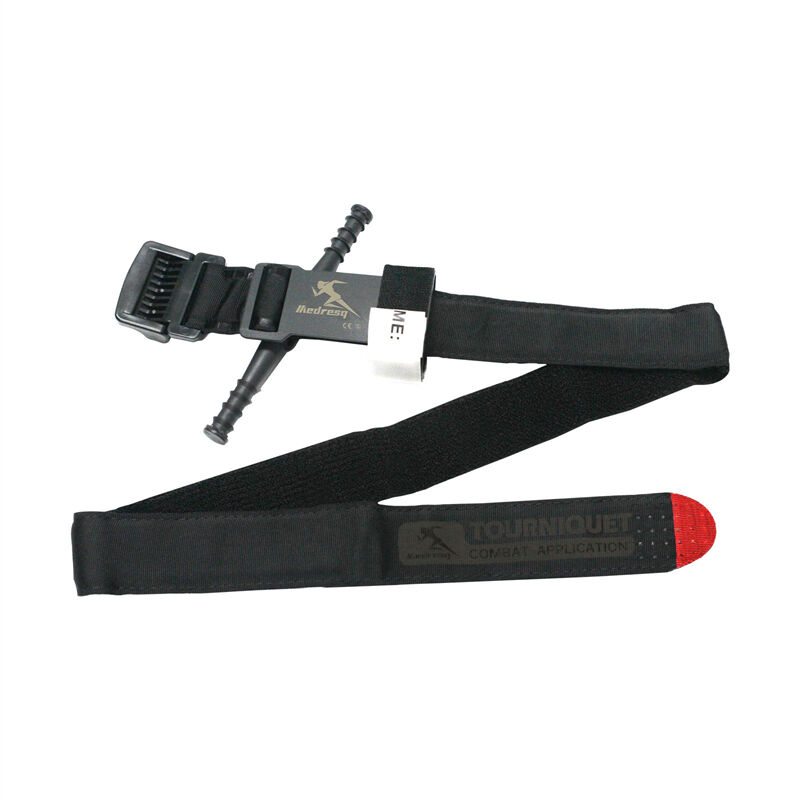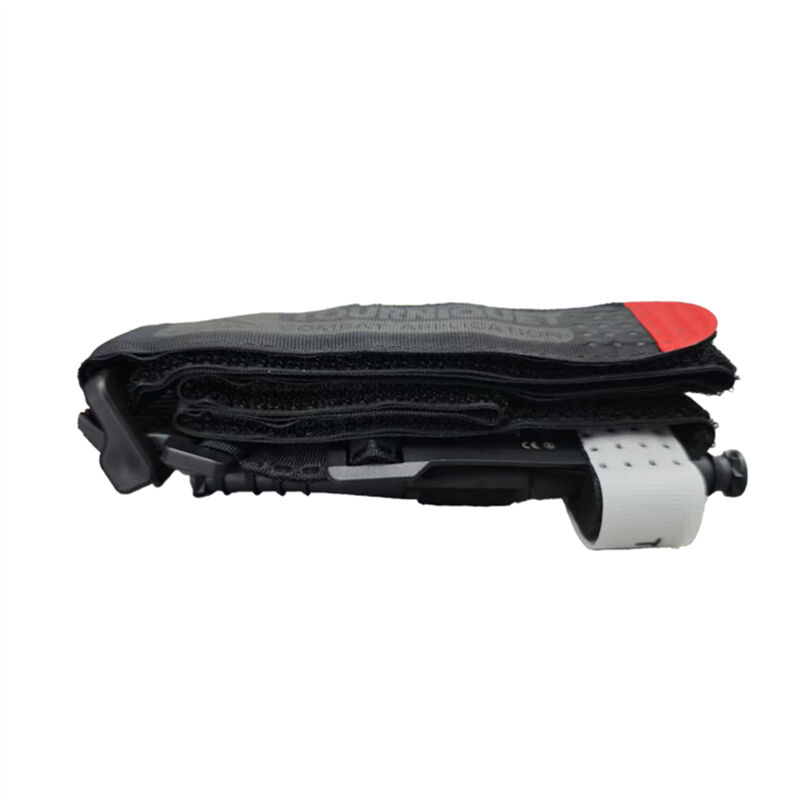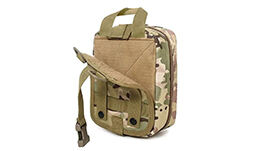Windlass Rod Tourniquet: The Ultimate Guide to Life-Saving Hemorrhage Control
In emergency trauma situations, severe bleeding is one of the leading causes of preventable death. A Windlass Rod Tourniquet is a critical medical device designed to stop life-threatening hemorrhage by applying controlled pressure to a limb. At Medresq, we specialize in high-quality, custom medical tourniquets that meet the highest safety and performance standards.
This comprehensive guide covers:
✔ What a Windlass Rod Tourniquet is and how it works
✔ Key differences between windlass and other tourniquet types
✔ Why Medresq’s custom tourniquets stand out in emergencies
✔ Proper application techniques for maximum effectiveness
✔ How to choose the best tourniquet for military, medical, or first-aid use
By the end, you’ll understand why Medresq’s Windlass Rod Tourniquets are trusted by medical professionals, military personnel, and first responders worldwide.
What Is a Windlass Rod Tourniquet?
A Windlass Rod Tourniquet (TQ) is a mechanical compression device used to stop severe bleeding from extremity wounds (arms or legs). It consists of:
A strong, adjustable strap (nylon or similar material)
A windlass rod (a rigid stick used for tightening)
A locking mechanism to secure pressure
When rotated, the windlass rod tightens the strap, applying enough pressure to occlude arterial blood flow and prevent fatal blood loss.
Common Uses of Windlass Tourniquets
· Combat & Tactical Medicine – Used by military and law enforcement for gunshot wounds, blast injuries, and traumatic amputations.
· Emergency Medical Services (EMS) – Critical for accident victims with severe limb bleeding.
· First Aid & Disaster Preparedness – Essential in earthquakes, mass shootings, and industrial accidents.
· Hospital & Trauma Centers – Applied before surgery or in emergency hemorrhage control.

Why Choose a Windlass Rod Tourniquet Over Other Types?
Not all tourniquets are equally effective. Here’s why the windlass design is the gold standard:
1. More Effective Than Elastic or Strap-Only Tourniquets
Elastic bands often fail under high pressure.
Non-windlass straps may not tighten enough to stop arterial bleeding.
The windlass mechanism ensures consistent, life-saving pressure.
2. Faster & Easier to Apply in Emergencies
The one-handed operation allows self-application if needed.
Clear visual indicators (like a "TIME APPLIED" tag) help medical personnel track usage.
3. Proven Success in Real-World Trauma Cases
Military studies (CoTCCC-approved) confirm windlass tourniquets save lives.
Civilian EMS reports show higher survival rates when windlass TQs are used.
4. Reusable & Adjustable for Different Limb Sizes
Unlike single-use tourniquets, many Medresq models can be repositioned or reused (after sterilization).
Wider straps prevent tissue damage while maintaining pressure.
Medresq’s Custom Windlass Rod Tourniquets: Key Features
At Medresq, we engineer high-performance tourniquets with:
✔ Military-Grade Durability
Ripstop nylon webbing resists fraying under tension.
Aircraft-grade aluminum windlass rod for maximum strength.
✔ Hypoallergenic & Skin-Safe Materials
Latex-free straps reduce allergic reactions.
Padded edges minimize nerve compression.
✔ Quick-Release Buckle for Rapid Application
One-pull tightening allows fast response in emergencies.
Auto-locking windlass prevents accidental loosening.
✔ Customizable for Tactical & Medical Use
Different widths & lengths for arms, legs, or pediatric use.
CoTCCC & FDA-compliant designs for professional use.

How to Properly Apply a Windlass Rod Tourniquet
Correct application is critical—here’s a step-by-step guide:
Step 1: Position the Tourniquet
Place 2-3 inches above the wound (not over a joint).
If the injury is near a joint, go higher up the limb.
Step 2: Tighten the Strap
Pull the strap firmly until it’s snug.
Secure the buckle.
Step 3: Rotate the Windlass Rod
Twist the rod until bleeding stops completely.
Lock the rod in place using the retention clip.
Step 4: Note the Time of Application
Write the exact time on the tourniquet or patient’s skin.
Do NOT remove until a medical professional assesses the injury.
Pro Tip: Practice applying the tourniquet before an emergency to ensure speed and accuracy.
Who Should Use a Windlass Rod Tourniquet?
Our tourniquets are ideal for:
1. Military & Law Enforcement
Battlefield trauma kits
SWAT team medical supplies
2. Emergency Medical Services (EMS) & Firefighters
Ambulance trauma bags
Mass casualty incident (MCI) preparedness
3. Hospitals & Trauma Centers
ER hemorrhage control
Pre-surgical bleeding management
4. Outdoor Enthusiasts & Survivalists
Hunting, hiking, and disaster preparedness kits
Remote area first-aid supplies
How to Choose the Best Windlass Tourniquet

When selecting a tourniquet, consider:
1. CoTCCC or FDA Approval
Ensures military and medical reliability.
2. Strap Width & Material
Wider straps (1.5”+) distribute pressure better.
Abrasion-resistant nylon lasts longer.
3. Windlass Rod Strength
Metal rods (aluminum/steel) are more durable than plastic.
4. Ease of One-Handed Use
Critical for self-application in emergencies.
5. Customization Options
Medresq offers tailored designs for different applications.
Why Trust Medresq for Your Tourniquet Needs?
As a leading custom medical manufacturer, we provide:
· Battle-tested tourniquets used by professionals
· Custom sizing & branding options
· Bulk orders for hospitals, militaries, and EMS teams
· Fast production & global shipping
A Windlass Rod Tourniquet is a life-saving tool for stopping severe bleeding in emergencies. Medresq’s custom tourniquets offer superior strength, reliability, and ease of use—making them essential for military, medical, and first-aid applications.
Need a high-quality tourniquet? Contact Medresq today for custom solutions tailored to your needs!
Hot News
-
Advancements in Medical Structures: Enhancing Emergency Response and Patient Care
2025-06-13
-
The Vital Role of Stretchers in Emergency Medical Care
2025-03-07
-
DEVELOPMENT AND PROSPECT OF BATTLEFIELD INDIVIDUAL FIRST AID KIT
2025-02-20
-
Enhancing Emergency Response: The Role of IFAKs in Trauma Care
2025-02-20
-
Windlass Rod Tourniquet: An Essential Component in Emergency Medical Response
2025-02-13
-
The Windlass Rod Tourniquet: A Lifesaving Device in Emergency Medical Response
2025-02-13
-
Decompression Needle: Essential Design, Usage, and Future Directions in Trauma Care
2024-11-29
 EN
EN
 FR
FR
 DE
DE
 IT
IT
 JA
JA
 KO
KO
 RU
RU
 ES
ES
 AR
AR
 BG
BG
 HR
HR
 DA
DA
 NL
NL
 FI
FI
 EL
EL
 NO
NO
 PL
PL
 PT
PT
 RO
RO
 SV
SV
 TL
TL
 ID
ID
 SR
SR
 UK
UK
 VI
VI
 SQ
SQ
 TH
TH
 TR
TR
 AF
AF
 MS
MS
 CY
CY
 IS
IS
 HY
HY
 AZ
AZ
 KA
KA
 MN
MN
 MY
MY
 KK
KK
 UZ
UZ
 CS
CS



